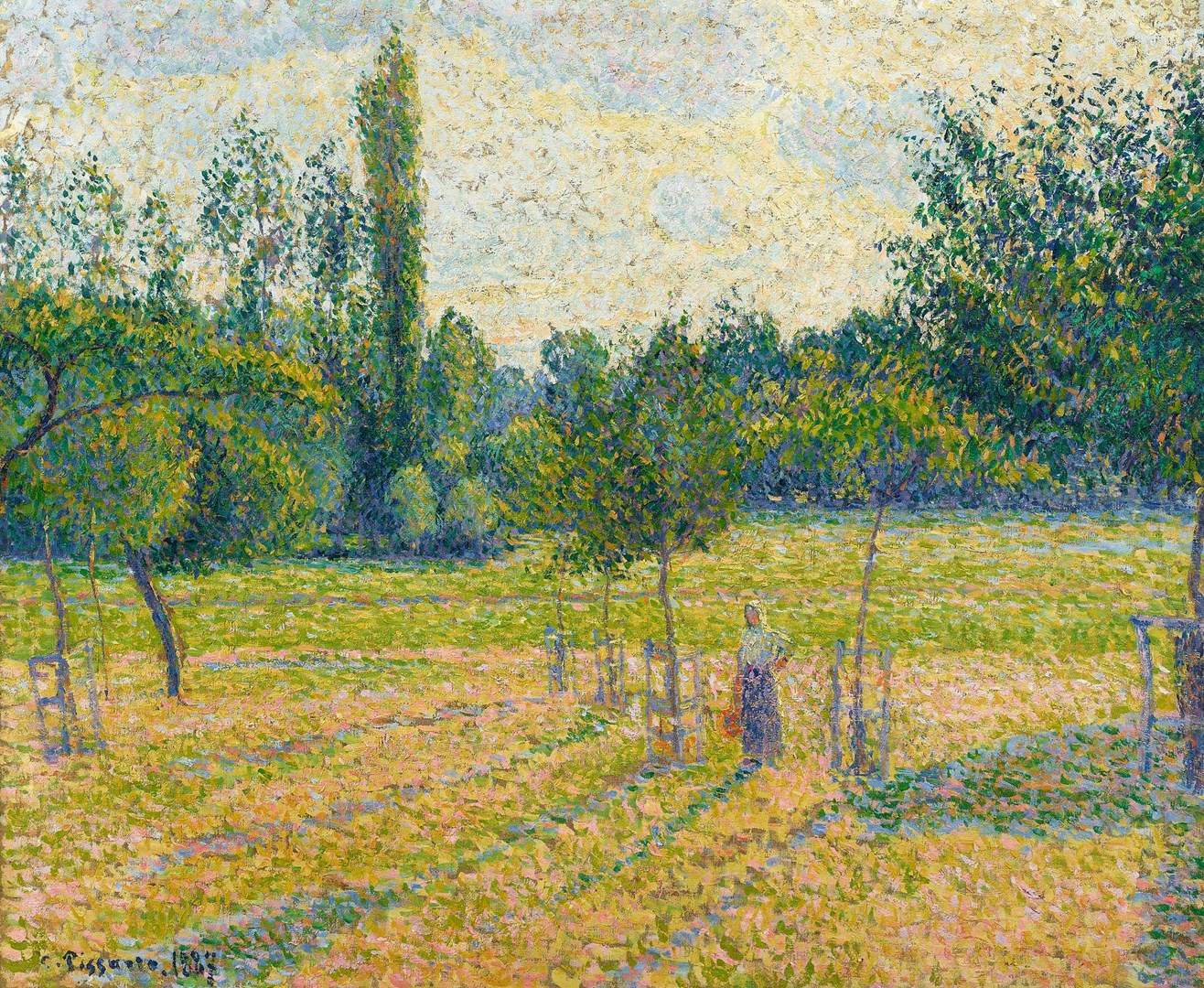The National Gallery in London is celebrating the 190th birthday of the great Impressionist Camille Pissarro (Charlotte Amalie, 1830 - Paris, 1903) with the acquisition of one of the artist’s masterpieces, Late Afternoon on Our Lawn (1887), which had been on loan at the London museum since November 2019. It is the twelfth work by Pissarro to enter the National Gallery’s collections (but it is the first by the “pointillist” Picasso, as well as the first from the 1980s) and became part of the collection after its owner, James Francis George Wilson, surrendered it as a form of payment of an inheritance tax (in England it is permissible to pay the tax by surrendering works of art to the state: the institution that regulates this form of exchange is called Acceptance in lieu). It can already be seen in Room 44 of the museum.
Executed in 1887, the painting was purchased the following year by the Impressionists’ longtime gallery owner, dealer Paul Durand-Ruel, after which it was shown in several exhibitions and, in the 1950s, was purchased by William Waldorf Astor, third Viscount of Astor, then inherited upon his passing by his wife Janet Bronwen Astor, who died in 2017. The work depicts the garden of a Pissarro property in Eragny, France, where the painter had settled in 1884 with his family and where he lived for some 20 years. It is an idyllic country view, of the kind that Pissarro often made during these years, partly to study the effects of seasonal changes on the landscape. One figure also appears in the painting, that of Pissarro’s wife, depicted standing with a basket in one hand and the other resting on her hips. The long shadows cast by the trees leave no doubt as to the time of day.
The work was probably begun en plein air to be finished in the studio-a typical practice of the Impressionists. Technically, Late Afternoon on Our Meadow is very close to the style of the young Georges Seurat (Paris, 1859 - Gravelines, 1891), whom Pissarro had approached precisely in 1887, adopting his technique made up of small dots of pure color juxtaposed. We see this especially in the meadow, where a first draft of green and yellow is covered with pink streaks, or in the shaded areas, where touches of blue and orange are superimposed on dark greens, in accordance with the theory of complementary colors, to give more light to the work: the result is a particularly bright and vibrant work.
“The freshness and superb state of preservation of this painting,” says Christopher Riopelle, curator of post-1800 paintings at the National Gallery, “allow us to see Picasso at a pivotal moment in his career that has not been represented at the National Gallery before. He slows down his usual rapid, improvisational technique to make pointillist compositions that register fluctuations in light and atmosphere with minute, exquisite precision.”
“Pissarro is well-represented at the National Gallery,” says the museum’s director, Gabriele Finaldi, "but Late Afternoon in Our Meadow demonstrates an aspect of his work that has hitherto been absent and represents his temporary adoption, in the 1880s, of the pointillist technique pioneered by Seurat, in a painting characterized by small touches of pure color to achieve rich luminous effects. It is a superb example and I am grateful to Acceptance in lieu for guiding the painting into the national collection for the enjoyment of all."
“I am delighted to announce that a landscape by Camille Pissarro has been acquired through Acceptance in Lieu,” says Edward Harley, chairman of the Acceptance in Lieu Panel, “and has been allocated to the National Gallery. Considered one of the highlights of this Neo-Impressionist phase, it is a wonderful work and enjoys a relevant provenance, and I hope its example will encourage others to use Acceptance in Lieu to bring great works of art into our collections.”
Pictured: Camille Pissarro, Late Afternoon on Our Meadow (1887; oil on canvas, 54 x 65 cm; London, National Gallery)
 |
| A "pointillist" masterpiece by Camille Pissarro acquired by the National Gallery |
Warning: the translation into English of the original Italian article was created using automatic tools. We undertake to review all articles, but we do not guarantee the total absence of inaccuracies in the translation due to the program. You can find the original by clicking on the ITA button. If you find any mistake,please contact us.